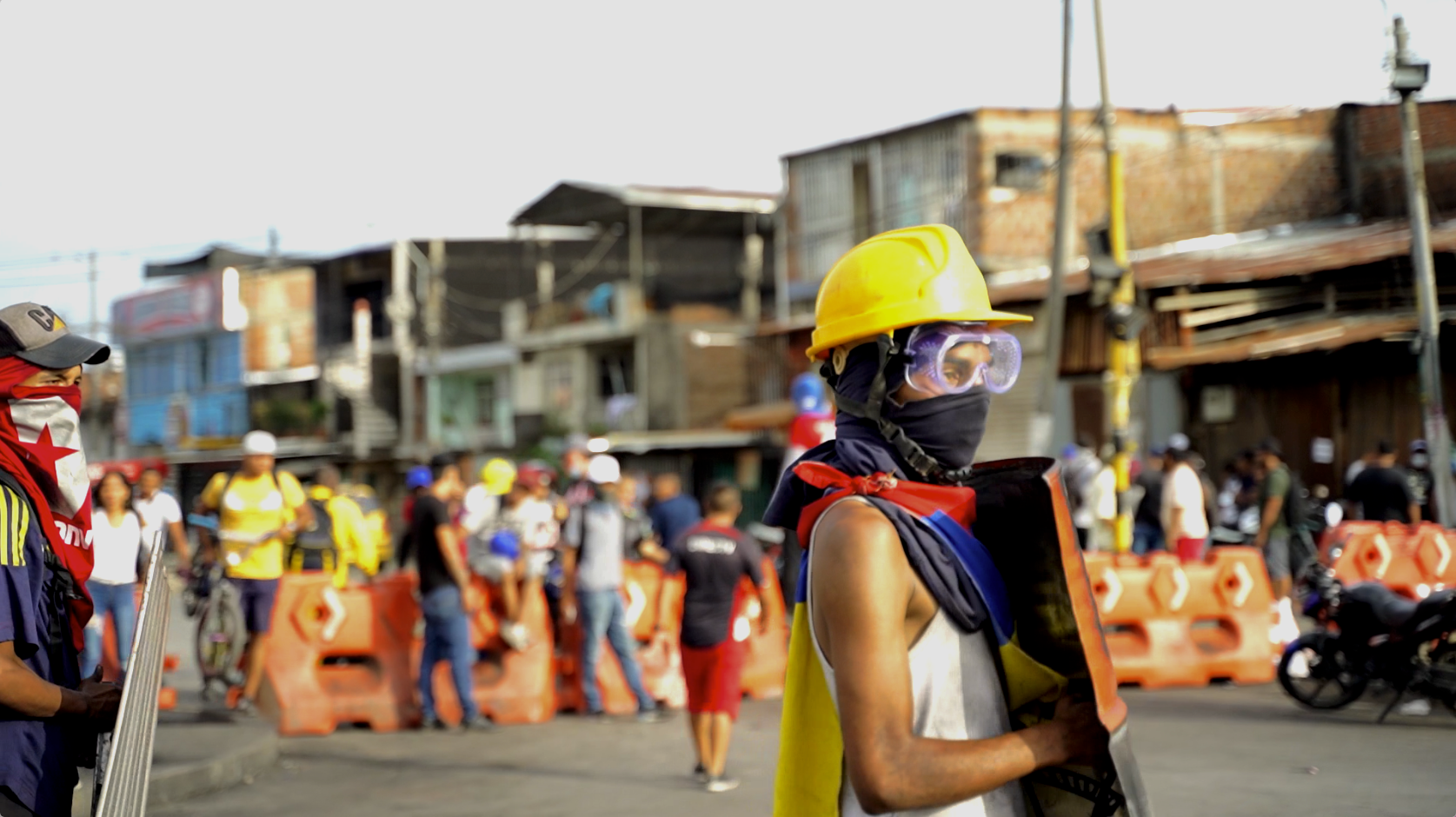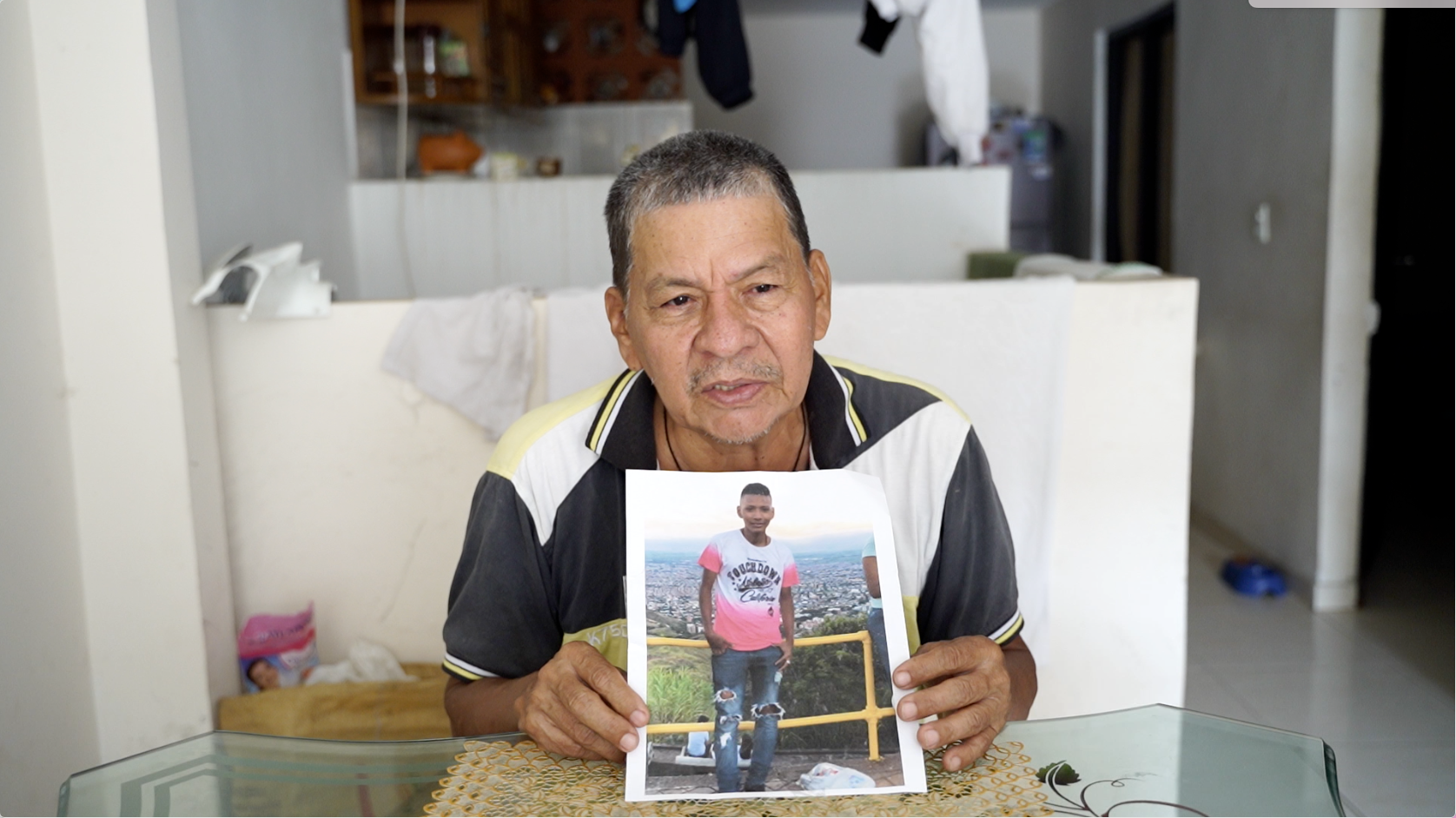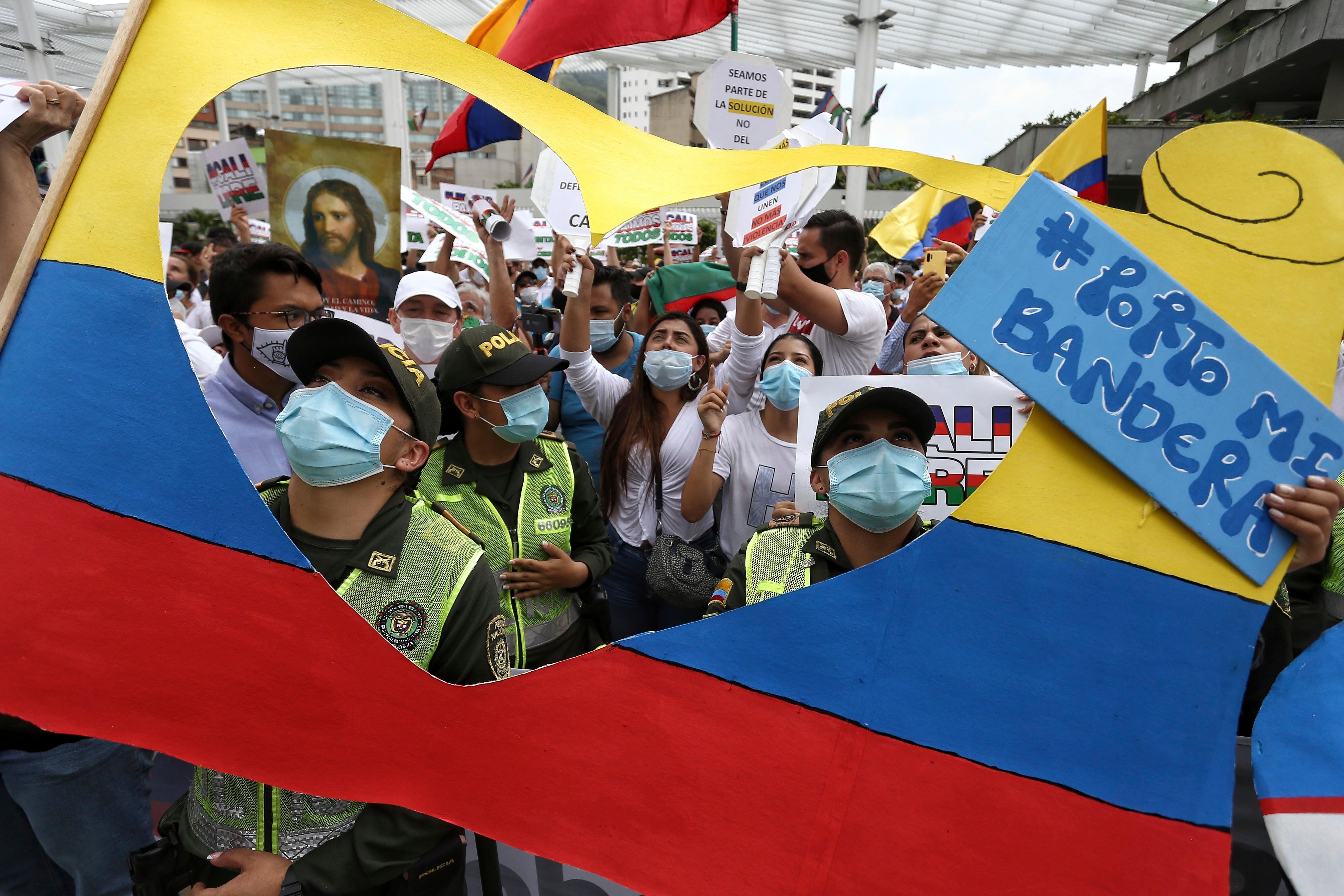Dying for a future: How young Colombians are leading anti-government demonstrations
Protests have shaken Colombia for several weeks now, and it is the country’s youth who have been on the front line demanding change, reports Jim Glade in Cali

On 28 April, Marcelo Agredo, 17, told his father Armando that he and his friends were heading into the streets of Cali, Colombia’s third largest city, for the first day of what has become four straight weeks of national protests.
“We’re going to march because things can’t stay the way they are,” Mr Agredo said his teenage son told him before leaving.
Across Colombia, thousands of young people like Marcelo are driving nationwide protests.
Originally sparked by a now-scrapped tax bill, protests have morphed into general outrage against the right-wing president Ivan Duque’s handling of the pandemic, economic inequality, assassinations of social leaders, and police brutality during the protests.
Despite some success on the part of protestors – they have forced the sinking of two unpopular reforms and a minister to resign – the young demonstrators remain on the streets demanding job opportunities, affordable higher education, and legal repercussions for police abuses.
And they’re risking their lives doing it.
Hours after he’d watched his youngest son leave for the protest, Mr Agredo got a call from his older son, Junior, letting him know that Marcelo had been injured during the marches, and that he should come to the hospital immediately.
“When I arrived at Carmona hospital, I was surprised to see him connected to a respirator,” Mr Agredo told The Independent from his flat in Cali. Doctors soon transferred Marcelo to a bigger hospital. “There, unfortunately, about 40 or 50 minutes later, my son died.”

Video corroborated by Human Rights Watch shows that Marcelo had been involved in an altercation with a motorcycle officer in which Marcelo kicked the officer from behind. The policeman turned toward Marcelo who was running away and fired at him with his pistol, mortally wounding him.
“A kick doesn’t justify taking someone’s life,” argued Mr Agredo. “Much less a child … who’s unarmed with nothing to defend himself with.”
Marcelo, a secondary school student, is one of 51 people nationwide who have died during the protests according to Colombian conflict monitors Indepaz and Temblores.
Forty-three of these deaths appear to be at the hands of security forces – including anti-riot police who carry non-lethal weaponry and uniformed police who carry firearms with live ammunition. Twenty of those who have died were aged between 13 and 25.
Most deaths have occurred in Cali, the colourful western city of 2.3 million people where over 60 per cent of the population is considered poor or vulnerable. Unlike other large cities such as Bogota and Medellin, young protesters in Cali have effectively blockaded roads, impacting commerce and causing petrol and food shortages.
The city has also witnessed many more lethal clashes with police.
“Here we are, risking our lives on the [front line],” said an 18-year-old protester at a blockade in Puerto Madera in eastern Cali. He declined to give his name for fear of reprisal. “Sometimes [the police] don’t attack with gas, but with bullets,” he said, tapping his makeshift shield fashioned from an oil drum. “This is good protection, but a bullet goes through it.”
International media have criticised Colombia’s leaders for painting protestors as terrorists in order to justify a highly militarised response. But on this sunny afternoon, a week after protests erupted, young people listen to rap music and paint lines for an ad hoc football pitch in the middle of a barricade. The mood is equally jubilant and on edge. Every so often, conversations halt and heads turn as vehicles approach the barricades.
“Any person, any motorbike, is a risk,” said a protester, donning a construction helmet and a Colombian flag. “We’re not ready for any kind of war … This is all new to us.” There are videos online that teach protest methods he said, but when demonstrations began, they learnt as they went along. “Who knew how to use a shield?”
Young leaders are trying to bring more order to the barricades, however. At a nighttime meeting between representatives from Puerto Madera and a neighbouring blockade, Calipso, university-aged men and women in T-shirts and trainers debate how to better coordinate between their groups. “The idea is that we talk together… and we unite and strengthen each other,” said a young woman.
They discuss what time to open and close the barricades, better forms of communication and how to coordinate medical treatment. They also acknowledge the historical violence between the neighbourhood gangs: “We’re not gonna lie. Right now, we’re friends with our enemies,” said a leader from Puerto Madera. A woman from Calipso chimed in, “We’re all united.”
The following day, across town in the northern neighbourhood of Paso Comercio, Julian Ledesma, 23, recounted how his friend Yinson Andres Ángulo, 23, was gunned down during protests on 1 May. “He was like a brother to me,” said Ledesma. “He was honorable … helped his family … His family was his mother, they lived together.”
Standing on a corner by a barbed wire fence, Ledesma said that he and Yinson were protesting peacefully that day. A group of protesters ahead were throwing rocks at police in formation on a nearby bridge. All of a sudden, a stun grenade exploded and the crowd retreated. “In the middle of the stun blast I heard gunshots,” said Ledesma.

“I turned around to look for my friend,” he explained. “And that’s when I heard people yelling: ‘They shot him! They shot him! Get him out of here!” Ledesma said he saw his friend, dressed in a jacket with Colombia insignia, laying on the pavement.
Ledesma and a group of protesters carried Yinson to a nearby motorcycle and rushed him to the hospital. “It didn’t take more than five minutes for the doctor to come out and tell us that he was dead.”
State violence amid Colombia’s protests has drawn international scrutiny. British MPs have raised the issue in parliament, and members of the US Congress have called on the government to suspend military assistance. Colombia’s government has rowed back on its characterisation of protesters as terrorists, and President Duque has announced investigations into police misconduct. However, an end to the protests, and the violent crackdowns, remains out of sight.
From her home Cali, Yinson’s mother, Gloria Stella Rodríguez, struggles with her loss.
“I don’t know at what moment [the protests] got out of control,” she said. “Now there are many deaths, disappearances, and injured people. Even police officers. I don’t have anything against the police, because everyone has a mum and I am a mum, and it really hurts.”
Additional reporting by Jonathan Hernández Nassif
Join our commenting forum
Join thought-provoking conversations, follow other Independent readers and see their replies
Comments
Bookmark popover
Removed from bookmarks